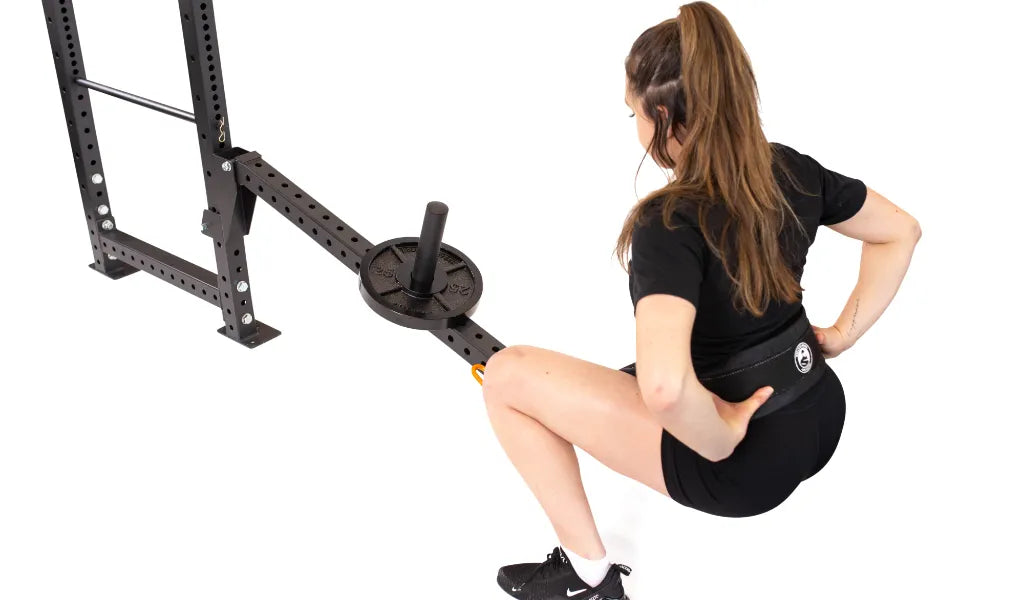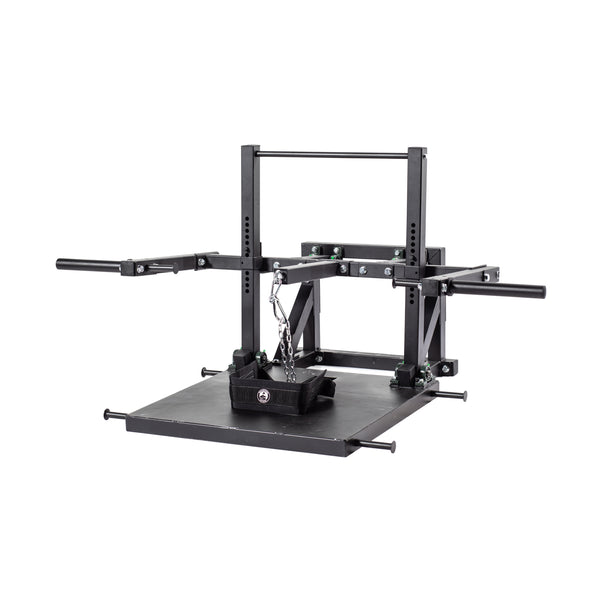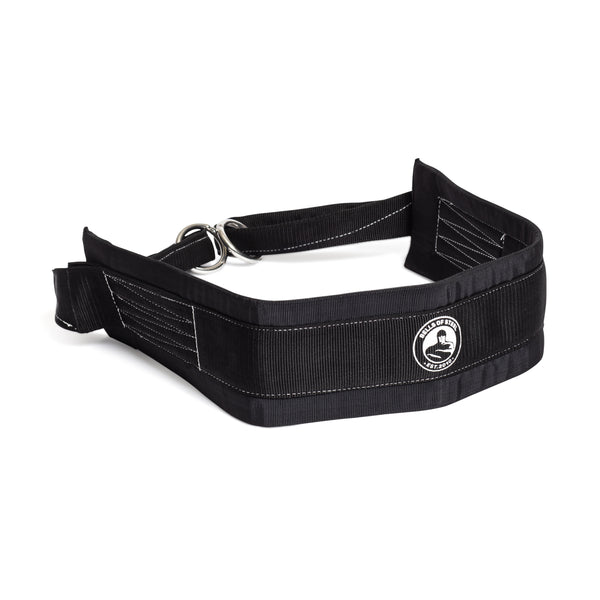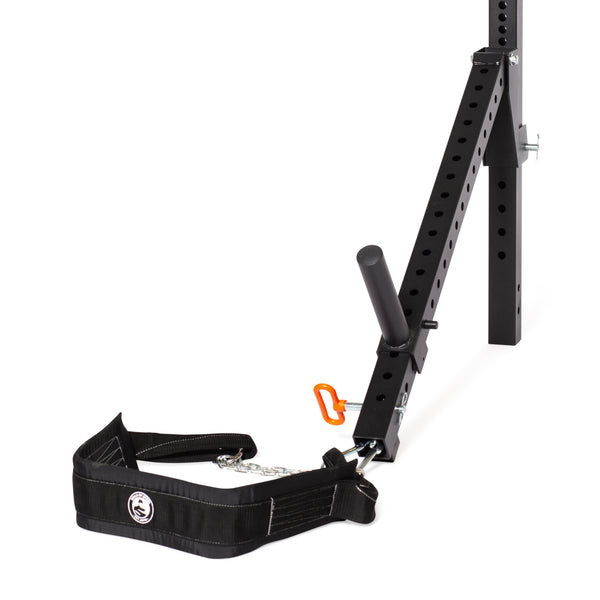Leg day lovers know the struggle: heavy squats build power and mass, but they also load up the spine and hammer the shoulders. That’s where a belt squat attachment (sometimes called a drop-in belt squat) comes into play.
Designed to bolt directly into your power rack, this attachment lets you train your lower body by loading weight through the hips instead of across the back. The big question is—are they worth it? Let’s dig in.
What Is a Belt Squat Attachment?
A belt squat attachment is a rack-mounted unit that allows you to perform squats without putting a barbell on your back. You wear a belt connected to the attachment, and as you squat, the load is distributed through your hips and legs.
Unlike standalone belt squat machines, the attachment is designed to save space by fitting into your existing rack. It’s not portable—you’ll bolt it in place—but it offers a compact way to reap the benefits of belt squats without taking up half your gym.
Benefits of a Belt Squat Attachment
Reduced Spinal and Shoulder Stress
Because the load comes from your hips, the spine and shoulders are spared. This makes belt squats perfect for lifters dealing with back or shoulder discomfort who still want to push their leg training hard.
Joint-Friendly Leg Volume
You can blast your quads, glutes, and hamstrings without the same joint stress that heavy back squats bring. That means more volume, faster recovery, and fewer cranky body parts.
Budget and Space-Friendly
Compared to a full belt squat machine, an attachment costs far less and uses your existing rack setup. It’s a solid option for home gym owners who want to maximize functionality in tight quarters.
Versatile Lower-Body Training
While squats are the star, the attachment also works for calf raises, marches, split squats, and other variations. It’s a multi-tool for leg day that goes beyond simple up-and-down reps.
Ideal for Supplemental Training
Powerlifters and strength athletes can use belt squats to build leg strength without overloading their nervous system or interfering with barbell recovery.
Who Should Consider a Belt Squat Attachment?
-
Home Gym Owners with Limited Space: A smart way to add leg variety without a standalone machine.
-
Lifters with Back or Shoulder Pain: Belt squats keep the load off problem areas.
-
Volume-Hungry Athletes: Perfect for hypertrophy training and accessory work.
-
Strength Athletes: Adds quad and glute strength without zapping recovery from barbell lifts.
Who Might Skip It?
-
Minimalists: If your training is built on squats, deadlifts, and presses, you might not need it.
-
Tiny Gym Owners: Even though it’s compact, it does take up interior rack space that could interfere with other lifts.
-
Absolute Beginners: If you’re just getting started, a barbell and basic setup will serve you well before adding niche tools.
Is a Belt Squat Attachment Worth It?
For the right lifter, absolutely. If you want the benefits of squatting without the spinal stress, or if you’re chasing leg growth without beating up your body, a belt squat attachment is a powerful investment. It’s especially worth it for intermediate to advanced lifters, home gym owners with a power rack, and anyone who needs a joint-friendly way to train hard.
If you’re brand new, strapped for space, or more focused on general fitness than heavy leg work, you can hold off until you’ve built out the basics.
FAQs: Belt Squat Attachments
What’s the difference between a belt squat attachment and a machine?
A machine is a standalone unit with its own frame and footprint. An attachment bolts into your rack. Machines offer more dedicated space and versatility, but attachments save space and money.
Can you go heavy with a belt squat attachment?
Yes. Depending on your rack and the attachment, you can safely load hundreds of pounds. The limiting factor is usually your rack stability, not the attachment itself.
Do belt squats replace back squats?
Not completely. Back squats train upper-body stability and barbell control in addition to your legs. Belt squats are better for isolating leg strength without taxing your spine.
How much space does a belt squat attachment take up?
Since it installs inside your rack, it doesn’t add much to your footprint, but it will eat into interior rack space. Plan accordingly.
Is it good for beginners?
It can be, but most beginners will benefit more from learning barbell squats first. Belt squat attachments are best for lifters who already have a foundation.




